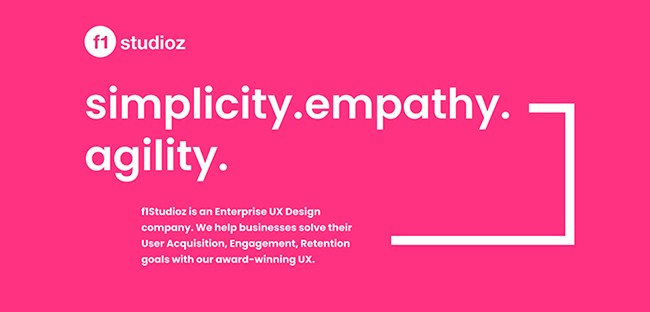
In industries where regulation is as critical as innovation – banking, healthcare, insurance, fintech, and enterprise AI – design is often treated as an afterthought. Enterprise teams in these sectors face a unique challenge: they must deliver seamless, intuitive digital experiences without compromising on security, compliance, or auditability. The result? Too often, end users – whether they are employees, partners, or customers – find themselves wrestling with slow, unintuitive platforms that meet legal requirements but fail to meet human needs.
The problem isn’t a lack of effort. It’s that regulations demand precision, while good UX demands empathy – and reconciling the two requires both technical depth and design maturity. This is where many internal product teams get stuck. We have domain expertise and know the rules inside out, but translating them into user-friendly digital products calls for a different skill set.
The Challenge: UX in Regulated Environments
Regulated industries have to balance:
- Strict compliance requirements: Every feature, form, and workflow must follow legal and industry-specific guidelines.
- Complex user journeys: Enterprise systems often cater to multiple personas, from front-line operators to C-suite executives, each with unique needs.
- High stakes for error: In fields like healthcare or finance, poor design can lead to costly mistakes, compliance breaches, or loss of trust.
- Legacy systems: Many enterprises are still tied to outdated tech stacks, making modern UX implementation harder.
For years, the standard “solution” was to sacrifice UX for compliance – accepting clunky workflows as a necessary evil. But with rising expectations, even in B2B and internal tools, that compromise no longer works. Employees expect consumer-grade usability. Clients expect transparency and speed. Regulators expect accuracy.
f1Studioz was built for exactly this intersection – delivering human-centered UX and front-end engineering that thrives in complexity. With over a decade of experience, we have helped enterprises in finance, healthcare, AI, and other regulated spaces simplify the complex without cutting corners on compliance.
Our strength lies in understanding that regulated UX is not about making things “pretty.” It’s about designing clarity, efficiency, and trust into every interaction – all while embedding the necessary guardrails dictated by law or industry norms.
How f1Studioz Works With Enterprises

1. Immersing in the Domain
Before any design work begins, our team goes deep into the client’s world – understanding the regulations, workflows, and edge cases. This means talking to compliance officers, shadowing operational teams, and mapping user journeys across different roles and permission levels.
2. Balancing Human Needs and Compliance
f1Studioz treats compliance constraints as design parameters, not blockers. For example, in a financial services dashboard, every data view might need permission layers and audit logging. We design these in ways that feel seamless to the user, rather than intrusive.
3. Design Systems for Scale
In large enterprises, consistency is critical – not just for branding, but for compliance. A well-built design system ensures that every button, form field, and alert message adheres to both UX best practices and regulatory rules. This makes scaling faster, reduces rework, and minimizes compliance risks.
4. Code-Ready UX
Unlike many design agencies, f1Studioz doesn’t stop at wireframes and prototypes. Our front-end engineering teams deliver production-ready code that aligns with enterprise tech stacks, helping clients avoid the handoff gaps that often cause compliance issues.
5. Iterating With Agility
Regulations change. Markets evolve. f1Studioz builds flexibility into their process so clients can adapt without starting from scratch. our “Plug In, No Pause Needed” model allows them to join ongoing product cycles without disrupting delivery.
Where This Approach Delivers Impact
For a healthcare platform, this could mean simplifying patient data entry without sacrificing HIPAA compliance.
For a fintech dashboard, it might mean clearer transaction tracking that satisfies both auditors and end users.
For AI-driven enterprise tools, it could involve making predictive insights explainable, so that regulators and decision-makers can trust the output.
Across all these, the impact is measurable: higher adoption rates, fewer user errors, and faster compliance audits.
Why Enterprises Keep Coming Back to f1Studioz
- Deep Enterprise Experience: We understand the realities of large organizations: multiple stakeholders, long procurement cycles, and integration with legacy systems.
- Proven in Regulated Domains: Case studies span finance, healthcare, insurance, and other compliance-heavy sectors.
- Recognized Excellence: Awards like the DNA Paris Design Awards and recognition from Clutch and Dribbble reinforce our credibility.
- Collaborative Mindset: Clients describe us as an extension of their internal team – equally comfortable working with product managers, compliance officers, and engineers.
- Future-Ready Design: With capabilities in AI-enhanced UX and conversational interfaces, we help enterprises prepare for what’s next.
The Bottom Line
In regulated industries, great UX isn’t optional anymore. It’s the difference between tools that get used and tools that get bypassed. Enterprises can no longer afford interfaces that frustrate users in the name of compliance.
f1Studioz has shown that you don’t have to choose between regulation and usability. With the right process, expertise, and mindset, you can have both – and when you do, you not only meet the rules, you earn your users’ trust.
For enterprises ready to turn compliance-heavy systems into seamless experiences, f1Studioz offers more than design. We offer a way forward.







